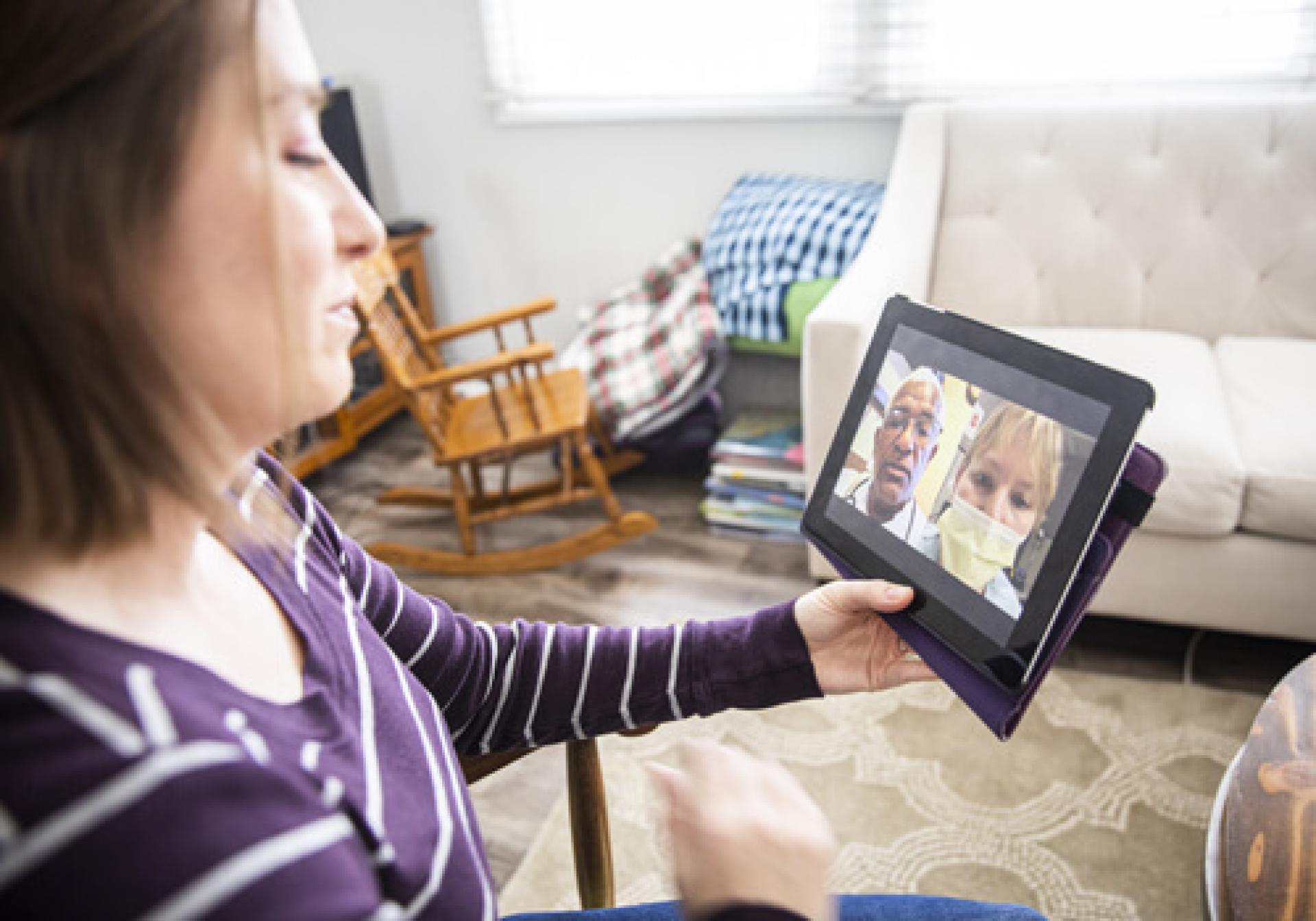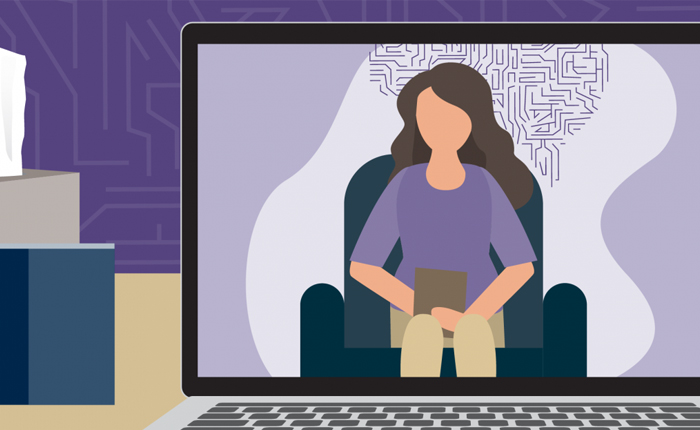

Telehealth & health IT
Telehealth & health IT
Rapid expansion of virtual care during the pandemic provides lessons for the future of telehealth
Seemingly overnight, the COVID-19 pandemic propelled a revolution in virtual healthcare, accelerating innovations in telehealth technology and adoption, and normalizing the concept of virtual visits for millions of Americans. IHPI researchers who have been studying telehealth access, costs, and patient experience for many years are now analyzing outcomes from pandemic-driven virtual care, and providing guidance to providers, insurers, and policymakers for envisioning the future of remote healthcare delivery.
A recent report from IHPI’s Telehealth Research Incubator that examined data from Michigan Medicine, Blue Cross Blue Shield of Michigan, and other studies found that telehealth allowed providers to deliver the same quality of care and establish the same level of patient connection as in-person visits, and confirmed most providers’ interest in continuing to offer virtual visits at pandemic-level volumes. The report also found costs, visit cancellations, and no-show rates to be nearly equal between in-person and video visits, but also uncovered notable disparities in telehealth adoption, access, and perceptions by race, insurance, age, ZIP code-level broadband access, and practice size and location.
“The rapid pivot to virtual visits in March and April 2020, when limiting in-person care to the most essential interactions, was one of the most rapid and revolutionary shifts modern medicine has ever witnessed,”
Chad Ellimoottil, M.D., M.S., who led IHPI’s telehealth efforts
Research continues through the Telehealth Research Incubator, which has brought together more than 30 collaborators from Medicine, Public Health, Information, Business and other U-M schools to publish two dozen manuscripts, submit several large grant proposals, and secure more than $2 million in external research funding to study telehealth quality and outcomes.

In February 2022, IHPI co-hosted a virtual, international research symposium in collaboration with colleagues from the Israel Telemedicine Community, part of the Digital Health Department in the Israeli Ministry of Health. The event, which featured three IHPI presenters and two Israeli presenters, attracted 81 attendees across the U.S. and Israel and included robust discussions about optimizing the delivery of telehealth following the rapid, widespread expansion of telehealth/digital health over the past several years.
Highlights

An evaluation of telehealth use by Medicare beneficiaries
As telehealth use surged during the COVID-19 pandemic, understanding its use for outpatient care and the extent it continues to serve as a substitute for in-person care are important analyses. This brief examines national Medicare claims data to better understand whether the use of telehealth led to an increase in the overall volume of outpatient evaluation and management services delivered to Medicare beneficiaries.

Telehealth Use in Michigan During COVID-19
U-M researchers analyze the relationship between virtual care adoption among primary care practices and emergency department visits or hospitalizations amid the COVID-19 pandemic.

Behavioral Health Provider Experiences with Telehealth During COVID-19
The COVID-19 pandemic prompted state and federal policy changes that enabled behavioral health providers to rapidly shift from in-person to telehealth visits to continue treating clients. This IHPI brief examines Michigan clinicians’ experiences with virtual care and outlines policy considerations to sustain and improve access to telebehavioral health.
Featured News

Pandemic tripled telehealth use for Gen Z, but even digital natives want in-person care
Most teens and young adults see the benefit of telemedicine, especially by video and for minor ailments.

Doctors across state borders: Telehealth study could inform policy
As special pandemic rules end, a new analysis shows the potential outsize impact on patients in some states and rural areas of others.

Where mental health is scarce, telehealth makes a big difference
Large randomized study of two approaches to support rural primary care providers in caring for people with PTSD or bipolar disorder shows both work.

